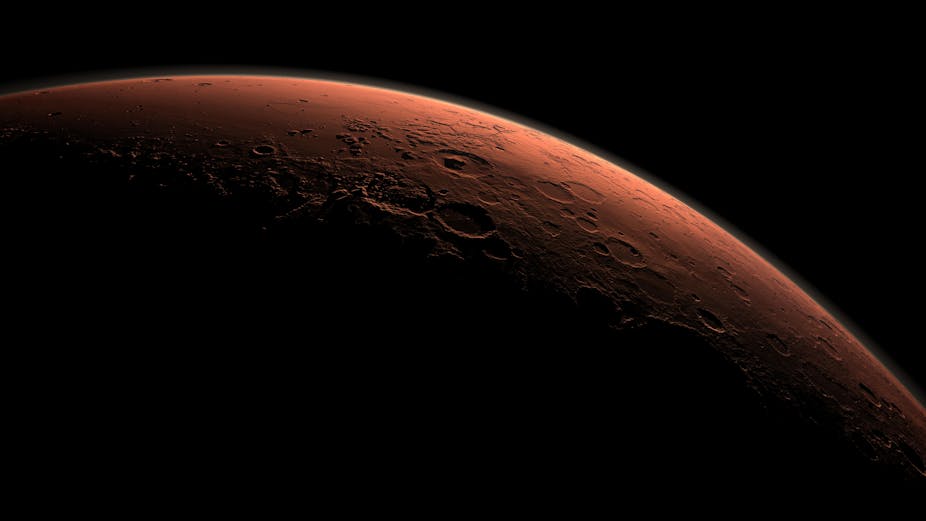NASA has a rover called Curiosity, currently scurrying around the surface of Mars, exploring the geology with the aim of better understanding whether or not life could, at one time, have existed on the Red Planet.
Among the things Curiosity has been particularly keen to sniff out is the presence of water and minerals which have been altered by water at some stage of their existence. The now confirmed presence of both add to the argument in favour of Mars having been suitably predisposed towards life during its past (whether that time period extends forward to the present is not one of the objectives of the MSL mission, of which Curiosity is the lead ground-based tool).
But now, Steven Benner of the University of Florida, has proposed an even more remarkable hypothesis: not only did life exist on Mars, but it could conceivably have seeded life as we know it on Earth. He argues that chunks of the Martian crust could have been calved off and found their way to Earth, whereupon they delivered their life-payload to a receptive, water-filled world.

Benner makes the point that all life as we know it is based on the key molecules, DNA-RNA-proteins. For many, RNA has long been considered the most important of this triumvirate, because of its ability to perform the important biochemical functions of both DNA and proteins. However, for RNA to have emerged within a geological, planetary environment, Benner argues the need for water (but not too much of it) and minerals based on at least two elements which would have a far greater provenance on Mars than on Earth - boron and molybdenum.
Benner has been working on how boron and molybdenum influence the formation of ribose, the central chemical component of RNA, for some years and has clearly amassed a great deal of information on their abilities to aid selective ribose formation. This, coupled with our knowledge that boron is present in meteorites from Mars, suggests to Benner that Martian chemistry may have unlocked the door to life on Earth.
It is a fascinating hypothesis that owes more than a passing nod to the (rather older) hypothesis of panspermia, but perhaps serves science best as complementary to the earth-centred hypotheses of where life may have begun, such as hydrothermal alkaline vents or geothermal wetting-drying systems.
Arguably, the question of where life began is less fundamental than how it began. To understand the latter, we need to look more at how far-from-equilibrium geological environments of all flavours, terrestrial and Martian, could have given birth to primitive chemical machines.
In effect, the RNA-world view, including Benner’s suggested roles for Martian boron and molybdenum, may hint more at how primitive chemical machines first became primitive biological (aka living) machines. In my view, Benner has opened the door further on the problem of from whence life came. Now we must look more towards the how.

